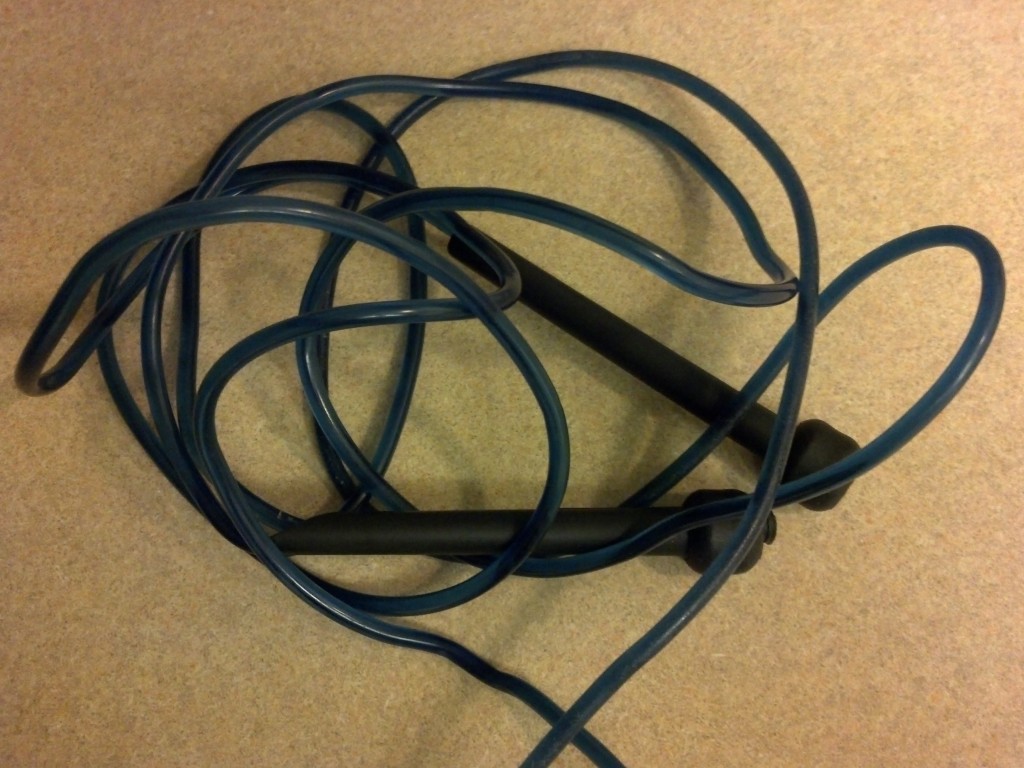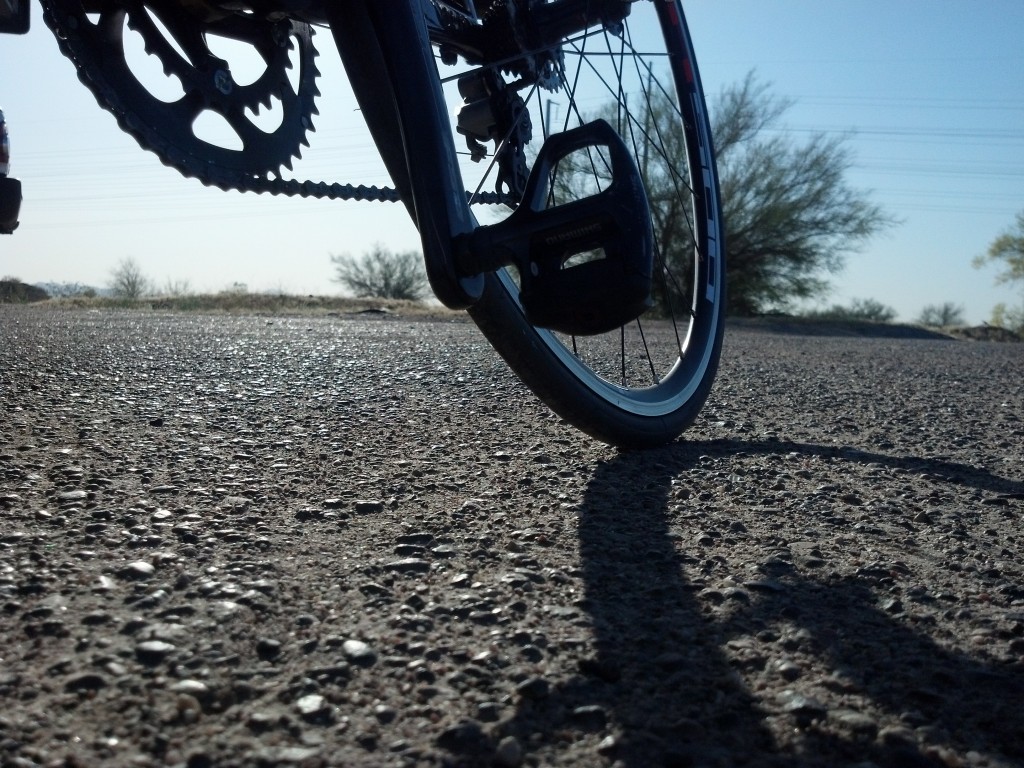A comprehensive look at the training logs, resources and thought processes behind my first Ironman triathlon

About a year ago, I not only showed up and committed to taking on my first Ironman triathlon, but I also pledged to use an unconventional training program that focused on strength training and shorter distances at higher intensities.
The program is called Crossfit Endurance (CFE), and now that I’ve got my first Ironman in the books, I can say to you without a shred of doubt that it works.
But back then, I didn’t know it was going to work, so I spent hours researching CFE Ironman training plans to make sure I was headed in the right direction.
I found a lot of helpful resources and great advice – which you’ll read about later on – but I was never able to find a comprehensive, detailed training plan that didn’t require some form of payment or subscription.
To remedy that, for anyone in the same position I was in, I’m going to share my complete training logs, workout routines and resources, for free.
In this article, you’ll also read why I decided to go the CFE route (rather than the more conventional Long Slow Distance (LSD) approach), see what resources I used to help formulate my program and learn key tips to keep in mind when following CFE.
To begin, let’s take a look at the main reasons I opted for a Crossfit Endurance program, rather than LSD.
Why Crossfit Endurance for Ironman?
- To get stronger
- To reduce the toll of training on my tendons and joints
- To use time efficiently
Secondary factors include: saving money by not hiring a coach, and feeling cool for going against the grain.
Notice anything missing from that list?
If you answered something like, “Uh, yeah. You didn’t say anything about trying to get a faster Ironman race time,” then you are correct sir (or madame, or omnipotent Google Internet-crawler-bot).
Since this was my first attempt at an Ironman, and I didn’t have much experience at anything close to that distance, I didn’t include a finish time in my goal for the race. Just finish strong.
I bring that up so you can see that strength, health and efficiency took priority over finish time, for me in this race. From what I’ve read, I imagine that if I was shooting to win my age group, or go pro, with a super fast time, I’d probably need to take a more LSD-based approach to training.
Also, keep in mind that many athletes – including my sister – have found success using the LSD strategy. This article isn’t an attack on those folks, their coaches or that strategy.
Instead, it’s a shining personal endorsement of CFE, a case study of my successful experience and an attempt to show how, if your goals are similar to mine, to make it work for you.
Now that my goals are laid out, and you can see the context around my decision to follow the CFE protocol for Ironman, the next step is to hit the books.
Resources, articles and testimonials that cemented my CFE route
Before I turned to endurance sports in 2011, I had been following the crossfit.com workouts on and off for about three years. I subscribe to the program’s core philosophies and like the focus on strength, efficiency, health and intensity.
On the other hand, these days the Crossfit culture, brand and sprawl have taken on lives of their own, and often turn me off.
None the less, I’m still a believer. And when you use CFE to train for Ironman distances – you find out just how strong your faith is.
Going the CFE route is as much a test of faith and mental fortitude as it is of physical ability, because in CFE training, you never go close to the distances of the race. Therefore, you have to believe in the program and trust in yourself that all of those shorter workouts and intense lifting sessions are going to get the job done.
To fortify the foundation of my CFE faith, I spent hours combing through articles, reading blogs and trying to find as many testimonials as I could from people who have completed Ironman triathlons by following the CFE protocol. Here are the top resources I found:
- Robb Wolf / Ben Greenfield: 10 Ways Ironman Triathletes Can Avoid Chronic Cardio Self-Destruction
- TrainingPeaks: Minimalist Ironman Training
- CFE Forum: Is LSD out the door completely?
- CFE Forum: Thoughts on CF/CFE Efficacy for Ironman Triathlon
- CFE Forum: Another Ironman Question
- CFE Forum: Blogs of People Using CF/CFE for Half and Full Ironmans
- Beginner Triathlete Forum: My Crossfit Training Result/Experience
- Power Speed Endurance: A skill-based approach to endurance training
- And of course: crossfitendurance.com
The plan

Alright then. You have goals, a solid foundation and you’re ready to dominate.
But you still need a plan. A detailed plan. A plan that will tell you when to train, when to rest, how far and fast to swim, bike and run, how much to lift, the best way to stretch, the right shoes to buy, what to eat, and so on and so forth.
Well, I have some good news and some bad news.
Good news is I’m going to give you a copy – free of charge – of my detailed training logs and complete CFE Ironman program.
Bad news is you still need to spend a bunch of time picking apart the plan and crafting one that meets your needs. This isn’t a one-size fits all type of a program.
By reading through my training logs, you’ll have more information than I did at the beginning, and I hope it gives you some insight to help formulate your own planning process.
A couple quick notes on my training journal before we get to the link:
- The first tab shows the entire year of training, in chronological order, on one sheet
- The tabs that follow show the training logs, broken out month by month
- Each row is one workout session; when you see two rows with the same date, that indicates two workouts were performed that day
- Workouts are categorized into four areas: Swim, Bike, Run, WOD and Mobility
- Most of these workouts were copied and pasted from crossfitendurance.com
Ok. Have at it. Click here to view my Ironman CFE Training Logs: IMAZ 2013
Fun facts from my Ironman training plan:
I completed a total of 352 workouts, comprised of:
- 102 WODs (strength and conditioning workouts)
- 74 Swims
- 62 Mobility workouts: (25 of which were yoga classes)
- 59 Runs
- 52 Bike rides (23 of which were spin classes)
- 2 practice races (Boulder IM70.3, and Lifetime Olympic Tri)
Tips

- You gotta give ‘er. For the CFE program to work, you need to go hard, heavy and as fast as you can on most workouts.
- Don’t injure yourself lifting weights. If you don’t have the proper technique or experience required to perform olympic lifts, don’t force it. Learn good form, study the technique and get some help if you can.
- Go all in on CFE. When I started out at the beginning of the year, I tried to blend LSD with CFE and ended up burning out. If you decide to go CFE, commit to it entirely and have faith.
- Stretch and work on mobility every day. At least 15 minutes before and after every workout.
- Plan out your training every week. Here’s my general weekly training schedule, if it helps:
- Monday: Rest – Mobility – Yoga
- Tuesday: Morning Swim, Evening CFE WOD
- Wednesday: Morning Bike (Spin class), Evening CFE WOD
- Thursday: Morning Run, Evening CFE WOD
- Friday: Morning Swim, Evening CFE WOD
- Saturday: Long Bike
- Sunday: Long Run
By following this Crossfit Endurance based training plan I completed my first Ironman – Ironman Arizona 2013 – in 13:30:18. See the details and read my race recap here: AF race report: Ironman Arizona.
If you’re going the CFE route for an Ironman race, I hope this post gives you confidence, motivation and information to help you accomplish your goals. Please post your thoughts, experiences or any questions in the comments!
– Live every day –
Adam
P.S. I received great feedback and advice from readers of this blog, with some folks later in the year even sharing their own CFE Ironman training logs with me. I’m paying it forward here as a way to say thanks.
Disclaimer: I’m not certified or formally schooled on Crossfit, endurance training, or any of this stuff. The two injuries I suffered over the course of the year – plus my idiotic burn out – show my plans aren’t bullet proof, and I’m no professional.
Update: See the revamped CFE Ironman training strategy I put together to go after IMAZ 2017: CFE Ironman Plan 2.0